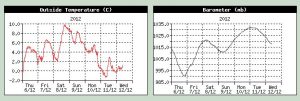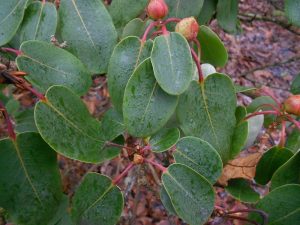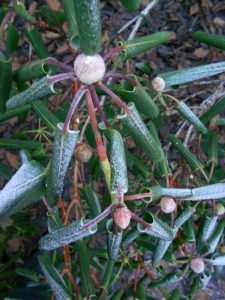Walking through the Rhododendron collection in the Garden as dusk is falling, a rapid temperature drop and the stillness of the evening. Then a sound that resembles water as it flows, gently tinkling, along a shallow stream bed. Taken together these events give rise to a rare natural phenomenon occurring at the Garden. Below are the temperature and barometric pressure graphs for the afternoon of Tuesday 11th December. As can be seen there was a steep rise in temperature from below freezing at day break to the relative warmth at midday. Then a sudden drop, again to zero, by midnight on the 11th.
Walking through the Copse at 3.15pm on the 11th as the last of the songbirds were seeking shelter for the night I was aware of a constant noise rising from the mature Rhododendron oreodoxa shrubs. These plants have medium sized evergreen leaves of a relative sturdy nature.One of the features of evergreen Rhododendrons is the ability to reduce their leaf surface, thus reducing transpiration, in cold weather. Either by dropping horizontal rosettes of foliage to a more vertical position (see seasonal plants of interest 2nd February 2009; description of Rh. lanigerum.) or by rolling the leaves to form a cylinder.
The source of the noise was the action of the leaves folding and then rolling to overlap forming perfect cylinders, of which the cigar rollers of Havana would be impressed. A constant, incessant chattering reminiscent of running water was amplified in the still air and by the amphitheatre effect of the planting. The noise is caused by ice crystals on the upper surface of the leaf scraping past the rigid surface of the underside of the leaf as the cylinder is formed.



